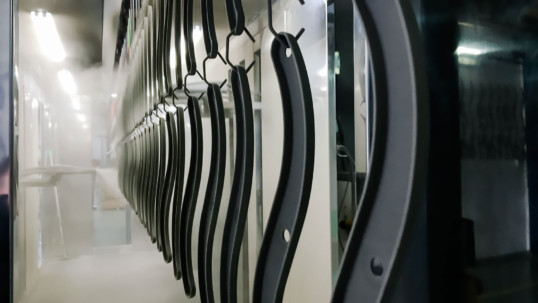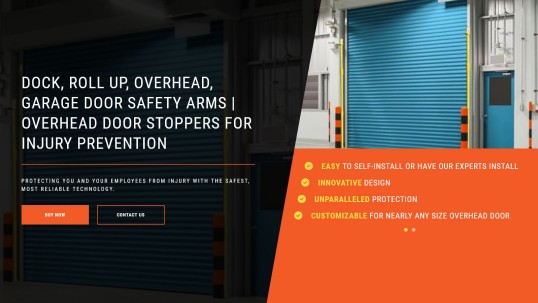Manufacturing Jobs & Hiring Solutions Through Outsourcing, Networking, & Referrals

The biggest question on the minds of the majority of manufacturers is: How do I fill my open manufacturing positions? The solutions we discuss below give a fresh perspective on something you may or may not have put thought into. The techniques discussed are used successfully by thousands (61% of according to this source) of manufacturers, and while your business is unique, the solutions are universal.
The Gap
A manufacturer typically begins the search for a new employee when they have the inability to accommodate work that lies either in core competencies, or value added processes. “The Gap” refers to the profit margin lost or left over after hiring a new employee. Most small to medium size businesses have a very small gap, which makes hiring a difficult decision when workload increases. Coupling the gap with a general unavailability of qualified candidates these manufacturers are typically inclined to either say yes to the work and provide less than ideal turnaround times to their customers, maintaining a huge backlog of work, or to turn the work down.
A Smarter Way to Play The Gap
Most companies prefer to stretch the gap as far as they can with internal resources before considering hiring, which adds stress on management and staff, and creates conflict with customers who want their work done yesterday. Business owners are all familiar with this work-overload and hiring cycle, but what if there was a way to stretch the gap so large that the profitability of hiring or not hiring was a no-brainer? What if you were able to control the incoming business in a way that allowed you to retain the customer, make a margin on their work, and then allowed you to hire when the increased margin of in-house production justified the expense.
The last sentence implied the solution – outsourcing. Not just any outsourcing, but local or regional outsourcing. Local or regional outsourcing implies that the work outsourced is sent to a trusted partner who will give reciprocal benefits in time, and that the GDP stays in your region which will have trickle down benefits to you.
 How Does Local Outsourcing Work?
How Does Local Outsourcing Work?
A successful outsourcing program is focused on utilization of outside resources to complete work through commission-based referral. This model allows the company to build their book of business without large overhead expenditures and employee acquisitions. When the outsourced work justifies the facility or staff upgrades, the manufacturer moves that work in house. Alternatively, if the mfg does not desire expansion, it allows them to make an additional profit margin beyond their current capacity.
 How do the Financials Work?
How do the Financials Work?
An example company which maintains a profit margin of 30% and that has $2 million in sales makes $600,000 in net profit per year, and is at full capacity. As soon as they hire a $70,000/yr employee, which costs $100,000 after training, benefits, and taxes, they are now making $2 million with $500,000 profit, or 25% profit margin. Of course the hiring of an employee bears the implication that now the company can take on new work, but in order to maintain the same profit margin, the company would have to bring in $2,142,857 overnight, meaning they generate an additional $142,857 in sales to get to the same margin.
The alternate plan is – you guessed it – to outsource. Even though you make a lower margin on the outsourced work, your total profit margin instantly goes up because you are outsourcing work beyond your current capacity. In order to make a comprehensive argument for local outsourcing, we need to look at the two types of work that a company might outsource, the first being work that lies outside of their core competencies (which manufacturers are usually more receptive to outsourcing), and work that lies within their core competencies.
An example of outsourced – outside core competency work might be a machine shop that pays the bills with precision machining work, and 10% of that work requires assembly or part finishing. An example of outsourced – inside core competency work would be that same machine shop making 10% more machining sales than it has capacity to fulfill so it sends the work to another shop. It is fairly natural to outsource the 10% but they may be hesitant to outsource precision machining work even if they are beyond capacity and can’t find or can’t afford an employee.
 Outsourcing can Alleviate Manufacturing Hiring Woes as most of the Fears of doing this are Unfounded
Outsourcing can Alleviate Manufacturing Hiring Woes as most of the Fears of doing this are Unfounded
As discussed before, many manufacturers are afraid to outsource work that lies inside their core competencies. The main reasons for these fears are: Desire to deliver expected quality to their customers, not wanting to lose profit margin, resistance to helping competitors. Let’s address each of these individually:
- Desire to deliver expected quality: This is a legitimate concern which can be addressed by developing a tight relationship with a company you trust. For a machining operation with a backlog of work, there are countless options, and networking with other shops in your region through organizations like the NTMA can help you identify a good partner. There are many small shops that are hungry for work, and who do a great job. Also keep in mind that in your customers’ minds, responsiveness and turnaround come in a close second to quality as reasons to stay with you, so keeping this work in house and sacrificing the rest of the customer experience will cause lost business in the long run. You may also search our database of manufacturers here on TriState Manufacturer’s Marketplace, where you can drill down and filter by specialty, certifications, location, shop size, and more. This whitepaper by Supply Chain Management Review discusses some of the nuances of outsourced supply chain management that you may find valuable.
- Loss of profit margin: Your temporary sacrifice of profit margin will put your company many steps ahead when you are able to bring the work back in house. Consider it a type of capital investment in your company. The work could’ve been kept in house, but you deal with the automatic reduction in profit margin, a 40 week backlog, plus it adds stress to you and creates customer dissatisfaction. Many times you may lose the work entirely if your turnaround is too long. Outsourcing the work allows you to keep your operation fluid, and gives you freedom to continue selling work.
- Fear of building competitors: The key point to understand here is that the company looking for your services is going to find someone to do the job. Outsourcing allows you to maintain control in that the customer is still your customer, even if someone else is doing the work. You always have the option to bring the work in house when you’re ready. The trusted partner you choose will most likely be a smaller operation, and when they need help fulfilling a larger or more complex job, your company will be the one they turn to.
Outsourcing Manufacturing Work is a Smart Business Move
Outsourcing work allows a mfg to build their workforce and capital equipment with confidence, because they know that the moment they are outsourcing enough work and sacrificing enough profit to justify bringing the work in house, they have the option to do so. Here’s an example, the machine shop mentioned before (operating at a 25% profit margin) may be outsourcing finish work that would require a $100,000 dollar paint booth and a $60,000/yr employee. At first they are outsourcing $50,000 annually worth of finished work (which allows them to keep customers). They may make a 10% margin on this work. An added benefit is that they can advertise that they are a machine shop with finishing capabilities, which over time gets them more work that requires machining and finishing. A reasonable time to bring this in house is when their additional margin (25% for keeping it in house versus 10% for outsourcing, so an additional 15%) adds up to 60k per year plus the paint booth cost depreciated over 10 years – so 60k plus 10k. In order to bring this work in house, that mfg would need to have 70k/.15 worth of gross sales in finishing work or $466,667. For the average machine shop, this figure would be difficult to attain with finish work, however we need to remember that niches are everything in manufacturing sales, and promoting yourself as a machine shop with finishing capabilities sets you apart and will generate additional machining sales if done properly.
Outsourcing can Help Your Region Grow and Why That Matters to You
By using a regional manufacturing partner, you are ensuring that your company not only maintains some benefit from the work, but also you are ensuring that the work stays in your area, which increases local GDP, and provides a better quality of living for you and everyone else in the region. For example, higher GDP means better education, which means better employees. It also means a higher demand for goods and services that you are involved in manufacturing. Higher GDP also gives you a better chance of attracting employees that might live elsewhere because the quality of life in your area. The opportunities for economic development extend beyond profit-based outsourcing in the form of good-faith referral.
How Any Manufacturer Can Contribute to Economic Growth in a Greater Way
Every manufacturer receives leads from time to time that are not appropriate for them because of capacity or capabilities. You have the opportunity to significantly impact regional GDP through getting these leads into the right company’s hands. TriState Manufacturer’s Marketplace designed a workflow to make this incredibly easy for you. When you receive a lead you can’t service, share it through this form, and we will keep you in the loop as we identify an appropriate provider. Think about this – there are around 12,000 manufacturers in the state of Pennsylvania, if half of these companies forwarded 5 leads that they couldn’t help per year, and we found a regional provider to fulfill the job, the economic repercussions would be astounding. Imagine if the average job size was only $30,000, that would add $750 Million in GDP per year.
How to Find a Manufacturing Partner for Outsourcing Work?
TriState Manufacturers Marketplace has a couple of mechanisms to help. First, if you are looking for a company to outsource work to, simply choose a category, and use our quick view to scan companies by size, capabilities, or certifications. You can inquire directly from their profile page to start the conversation. You may also use the general contact form, and our team will work to identify an ideal provider for you.
This function is appropriate for work that lies inside your core competencies, or in an area of your business you are building. Have a conversation with the company to see if you can outsource with some margin built in for you. Second, if you received a lead for something that is just outside of your capabilities or interests, use this form, and we will get it to the correct provider.
How Can We Help You?
General Inquiry
Have any questions, suggestions for industry categories, or thoughts on how we can improve?
Lead Forwarding
Have you received a lead that you can’t service that someone else in the region may benefit from?
General Inquiries
Lead Forwarding
Find a Supplier
Recent Posts

2024: Top 11 Reputable Metal Coating & Finishing Companies to Know Near PA, NY, OH, and WV

Overhead Door Safety Device Invented by Cleveland Manufacturer
AS13100 Standard/Spec Sheet Learn About and Receive a Downloadable Free Copy

